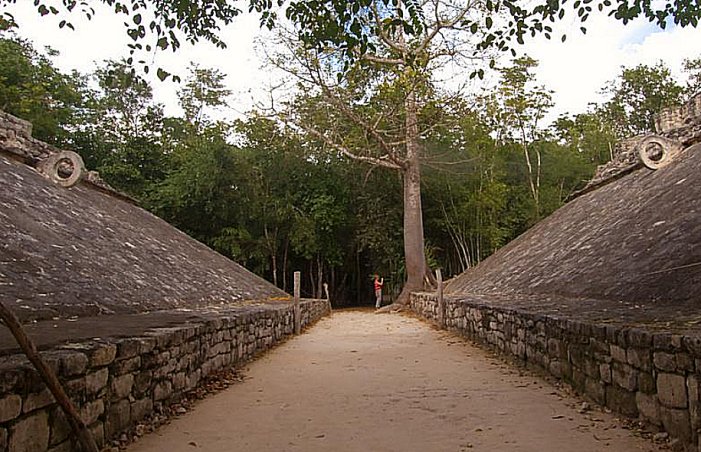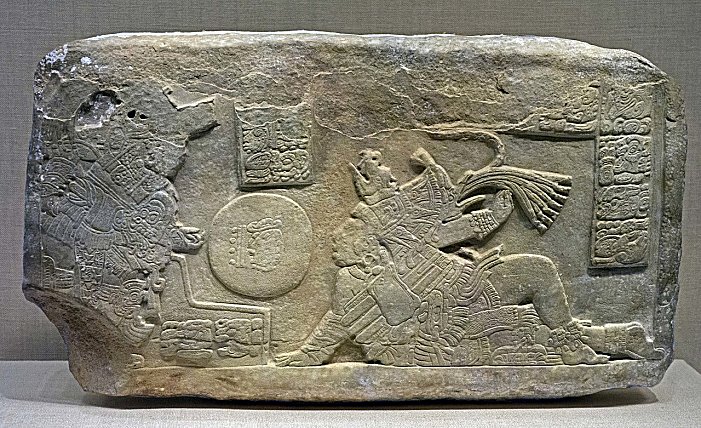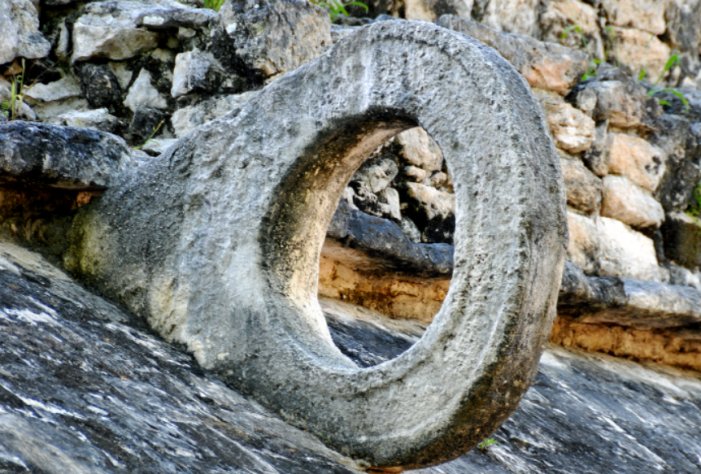Ancient Maya Ballcourts And Evidence Of Ceremonial Plant Species Offerings

Conny Waters – AncientPages.com – Archaeological investigations in the ancient Maya city of Yaxnohcah, conducted by scholars from the University of Cincinnati have uncovered compelling evidence of ceremonial rituals involving plant offerings within their renowned ballcourts.
Ball court in ancient Coba. Image credit: Šarunas Burdulis – CC BY 2.0
The ballcourts constructed by the ancient Maya civilization in Mexico were revered by people who even engaged in ceremonial offerings during the construction of the ballcourt.
The plants, renowned for their sacred associations and therapeutic properties, were unearthed beneath the paved surface of a plaza upon which a ballcourt structure had been erected.
“When they erected a new building, they asked the goodwill of the gods to protect the people inhabiting it,” UC Professor David Lentz said in a press release.
“Some people call it an ‘ensouling ritual,’ to get a blessing from and appease the gods.”
Archaeological investigations conducted from 2016 to 2022 at the Yaxnohcah site in Campeche, situated approximately 9 miles north of the Guatemalan border, focused on the excavation of a small section within the confines of a ballcourt.
Dr. Lentz and his colleagues have been conducting extensive research on the ancient Mesoamerican civilizations across Mexico and Central America using cutting-edge tools capable of identifying environmental DNA, to unravel enigmatic ways in which the ancient Maya people might have utilized these spaces.
UC Professor David Lentz and his research partners used environmental DNA to identify evidence of plants of ceremonial significance buried beneath an ancient Maya ballcourt in Mexico. Here he talks about a reproduction ceramic chocolate mixer featuring ancient Maya iconography. Photo/Andrew Higley/UC Marketing + Brand
The ancient Maya civilization engaged in various ball games, among which pok-a-tok stood out as a unique amalgamation of soccer and basketball. In this game, players endeavored to propel a ball through a ring or hoop affixed to a wall.
In this way, they could demonstrate their athletic prowess and the ability to think strategically. However, the ballcourts held a more profound significance within the ancient Mayan civilization, and went beyond recreational purposes.
Lentz said that not all of the ballcourts had hoops.”We think of ballcourts today as a place of entertainment. It wasn’t that way for the ancient Maya.”
He referred to a famous Mayan myth of hero twins who must play a ballgame with the gods to escape the underworld. And researchers believe in some instances, competitors were sacrificed at the conclusion of the match.
A relief of the Crown showing a scene from the Mesoamerican Ball GamE. Image credit: Adrian Hernandez – CC BY-SA 4.0
Ancient Maya cities, such as Tikal in Guatemala, exhibited a distinct architectural feature: ballcourts – constructed in close proximity to the most prominent temples – occupied prime locations within the ceremonial center. They were an integral component of the city’s landscape.
Researchers found evidence of plants associated with ancient Maya medicine used in divination rituals. They include a type of morning glory called xtabentun is known for its hallucinogenic properties. Today, people brew mead from the honey of bees that feed on the pollen of xtabentun flowers.
Another plant was Chili peppers today are a favorite spice around the world.
But for the ancient Maya, chili peppers were used to treat a variety of illnesses. An offering of chili peppers might have been intended to ward off disease,”because it was a healing plant, Lentz commented.
Ballcourt – Mexico-6864. Image credit: Dennis Jarvis – CC BY-SA 2.0 DEED Mexico-6864
The team also identified the tree Hampea trilobata or jool. Its leaves were used to wrap food bundles for Maya ceremonies. The ancient Maya also wove food baskets from twine made from the tree’s bark. And it was used in medicines to treat snake bites.
Another plant was Oxandra lanceolata (the plant lancewood) with oily leaves known as vasodilator, anesthetic and antibiotic agent.
“I think the fact that these four plants, which have a known cultural importance to the Maya, were found in a concentrated sample tells us it was an intentional and purposeful collection under this platform,” botanist and UC Associate Professor Eric Tepe said.
For years, researchers have examined trapped pollen, preserved charcoal, and ancient refuse to identify the dietary practices and plant utilization among ancient civilizations.
Now, environmental DNA can help learn even more about ancient civilizations.
There is also evidence that the ancient Maya civilization possessed advanced knowledge in water purification techniques and implemented sustainable forestry practices.
However, their resilience was ultimately challenged by prolonged periods of severe drought, and it is widely believed that extensive deforestation for agricultural purposes contributed to their decline.
The study was published in the journal PLOS One.
Written by Conny Waters – AncientPages.com Staff Writer








